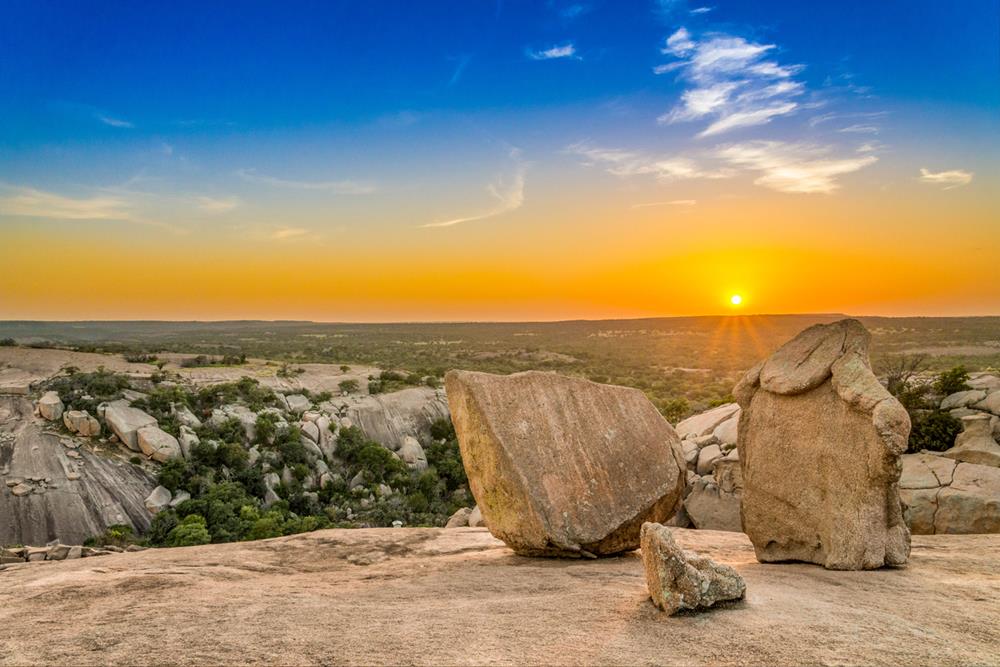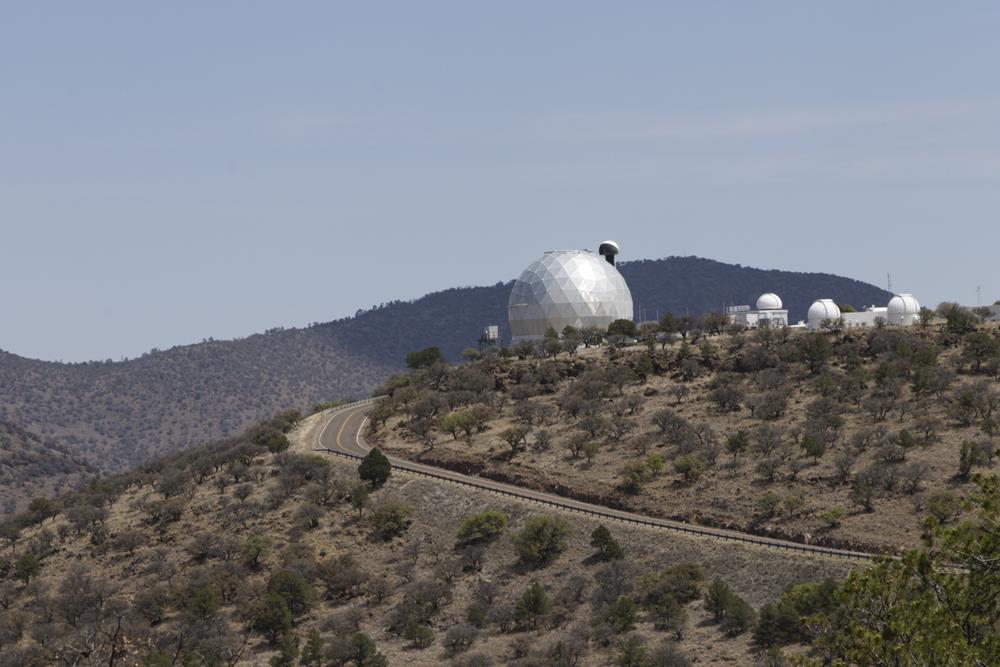Top 5 Interesting Geological Formations in Texas

Texas boasts incredible geological treasures you won't want to miss. Enchanted Rock's massive pink granite dome formed over a billion years ago, while Glen Rose's dinosaur tracks reveal ancient coastal ecosystems.
Caprock Canyons showcase dramatic erosion patterns rising 1,000 feet above the plains. Longhorn Cavern features stunning limestone passages sculpted by underground rivers, and the Guadalupe Mountains preserve a 260-million-year-old reef system. These natural wonders tell Texas's fascinating geological story.
Enchanted Rock Batholith: A Billion-Year-Old Granite Wonder
Rising 425 feet above the surrounding terrain, Enchanted Rock stands as one of Texas's most magnificent geological wonders. This massive pink granite dome originated about 1.1 billion years ago when molten magma cooled slowly deep beneath the Earth's surface.
When you visit, you'll be standing on one of the largest pink granite domes in the United States, a landmark visible for miles throughout the Texas Hill Country.
What you're seeing today is the exposed part of a much larger batholith that spans roughly 62 square miles underground. As overlying sedimentary layers eroded away, the granite expanded and began peeling in concentric sheets—a process geologists call exfoliation (sheeting). This ongoing phenomenon creates the dome's distinctive appearance as rock layers continue to slide down its slopes.
The area has been designated an International Dark Sky Park, making it an excellent location for stargazing and night photography.
Dinosaur Tracks of Glen Rose Formation
Nestled along the Paluxy River in central Texas, the Glen Rose Formation contains some of North America's most spectacular dinosaur tracks, dating back ~104–115 million years to the Lower Cretaceous.
These scientifically significant trackways formed when dinosaurs walked across soft, lime-rich mud that hardened and fossilized over time. The tracks reveal that this area was once a vast mud flat on the shores of an ancient inland sea.
- Massive sauropod footprints up to 3 feet across from 60-foot giants such as Sauroposeidon
- Theropod tracks with visible toe and claw marks, possibly from Acrocanthosaurus
- First scientifically documented in 1938, now protected as a National Natural Landmark
- Diverse footprint sizes reveal prehistoric behaviors along an ancient shoreline
You'll find over 50 track locations throughout the region, with the best-preserved examples now protected within Dinosaur Valley State Park, established in 1972.
Caprock Canyons: The Ancient Edge of Llano Estacado
The magnificent Caprock Escarpment towers up to 1,000 feet above Texas' Rolling Plains, forming the dramatic eastern boundary of the Llano Estacado plateau. Unlike mountains created by volcanic activity, this ~200-mile geological marvel resulted from millions of years of erosion. The escarpment's distinctive profile comes from its erosion-resistant caliche (caprock) layer—a hardened calcium carbonate that protects softer sediments beneath.
When you explore Caprock Canyons State Park, you'll witness vibrant Permian and Triassic red beds exposed by streams cutting through the escarpment. These canyons reveal ~250-million-year-old geologic history while supporting remarkable wildlife diversity.
Free-tailed bats, pronghorn, and the official Texas State Bison Herd all thrive in this unique landscape where microhabitats form at the dramatic junction between High and Rolling Plains. The escarpment also holds a rich cultural history as Plains Apache and Comanche peoples inhabited this region long before European explorers arrived.
Longhorn Cavern: Underground Rivers and Limestone Marvels
Deep beneath the Texas Hill Country, Longhorn Cavern stands as one of the state's most remarkable geological wonders, formed through a process that distinguishes it from many solution-drip caves. This "flow cave" was carved by underground rivers cutting through limestone deposited roughly 320–340 million years ago.
When you explore Longhorn Cavern, you'll encounter:
- Named rooms and features like Crystal City and the Hall of Diamonds with glittering calcite
- Water-sculpted amphitheaters and tunnels showcasing smooth, eroded limestone
- Historical layers, from prehistoric use to a 1930s nightclub
The cave's oriented passages reveal millions of years of geologic history, preserving both natural beauty and human heritage. The cavern maintains a year-round temperature of ~68°F, making it a comfortable destination regardless of Texas weather.
Guadalupe Mountains: Home to the Mighty Capitan Reef
Rising majestically from the arid Texas landscape, the Guadalupe Mountains showcase one of Earth's most spectacular geological treasures—the ancient Capitan Reef. This 260-million-year-old fossilized limestone complex towers up to 1,000 feet high, preserving a remarkable window into Permian marine ecosystems.
As you explore, you'll witness distinct depositional patterns across reef zones—from massive reef frameworks to back-reef, fore-reef, and basin deposits. The reef community composition reveals an incredible diversity of invertebrate fossils and sponge remains that occupied this ancient underwater world. The impressive formation rims the Delaware Basin for hundreds of miles, with the exposures in Guadalupe Mountains National Park among the most complete.
Tectonic forces later uplifted and faulted this marine wonder, with erosion carving iconic landmarks like El Capitan and Guadalupe Peak. You're seeing one of the world's best-preserved Paleozoic reef complexes—a geological masterpiece that predates the dinosaurs.



